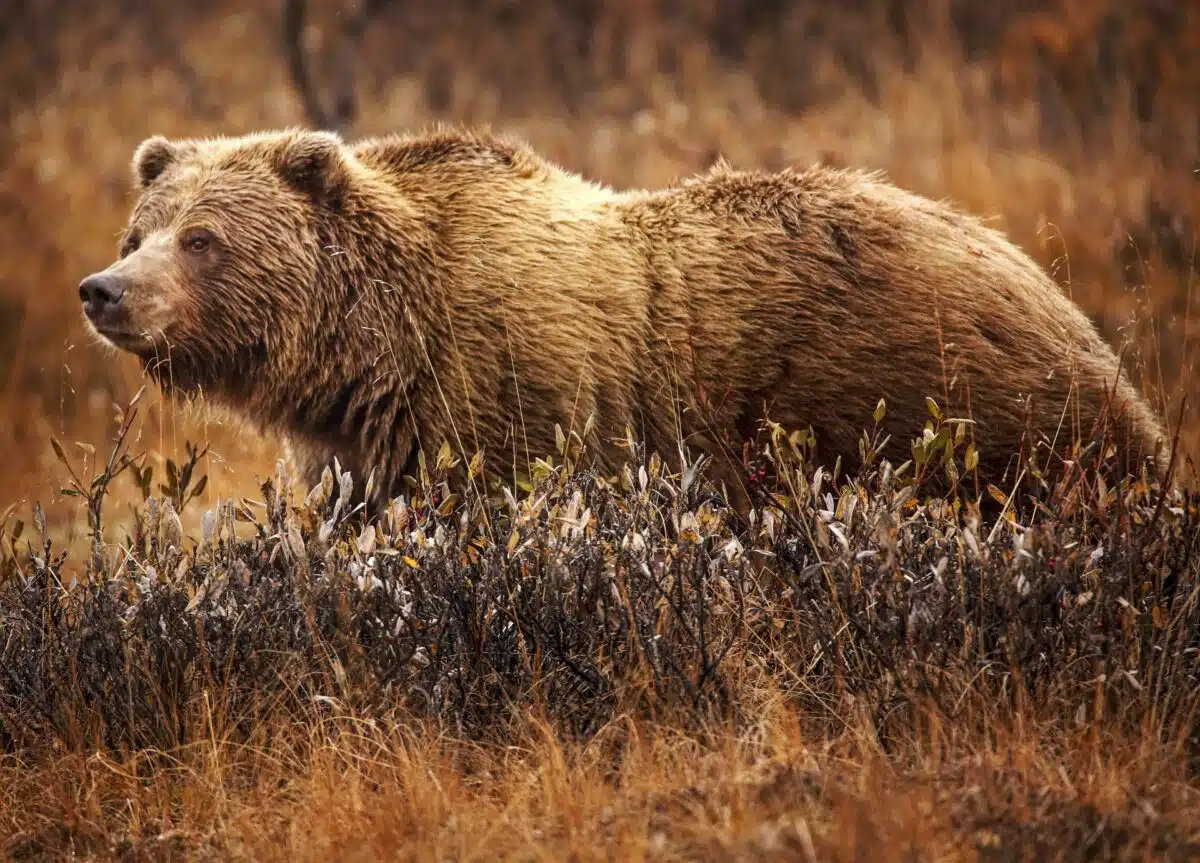Grizzly bears, among the largest land mammals in North America, captivate the imagination with their immense size, raw power, and striking beauty. Revered in cultural lore and recognized as a symbol of the wilderness, these bears are fascinating creatures that evoke both awe and caution. In this article, we will explore why the grizzly bear stands as one of nature’s most majestic yet dangerous animals.
Historical Background of the Grizzly Bear

The grizzly bear, scientifically known as Ursus arctos horribilis, once roamed extensively across North America. Their habitats spanned from Alaska down through the midwestern United States and from the Great Plains to the Pacific Coast. However, with the expansion of human settlements and agriculture, their range has significantly diminished, now largely confined to remote wilderness areas in Alaska, Western Canada, and parts of the contiguous United States.
Physical Characteristics of the Grizzly Bear

Grizzly bears are distinguished by their massive size, with males weighing between 400 to 790 pounds and occasionally more. They possess a pronounced shoulder hump, a result of strong muscles necessary for digging and intense physical activity. Their dense, shaggy fur ranges in color and often exhibits the ‘grizzled’ appearance for which they are named.
Unique Behavior and Social Structure

These solitary animals are primarily independent, with interactions mostly occurring during mating season or when females rear their young. Grizzlies are known to establish large territories, which they defend fiercely against intruders, displaying aggression to assert dominance and protect resources.
The Grizzly Bear’s Diet and Feeding Habits

Despite their fearsome appearance, grizzlies are omnivorous and rely on a varied diet. They consume berries, roots, insects, and fish, particularly during salmon runs. Carrion also forms a critical component of their diet, supplementing their nutritional needs, especially before hibernation.
Hibernation

Grizzly bears undergo a profound change during winter months. They enter a state of hibernation, wherein their metabolism decreases significantly to conserve energy. This natural adaptation allows them to survive harsh winters without food, utilizing fat reserves accumulated over the summer and fall.
The Majestic Aura of the Grizzly Bear

The sheer size and power of the grizzly bear contribute to its majestic quality. Witnessing a grizzly in its natural habitat, moving with a blend of grace and strength, instills a sense of respect and wonderment. This magnificence is heightened when viewed amidst the rugged landscapes they inhabit.
Grizzly Bear as a Cultural Symbol

Throughout history, the grizzly has been embedded in the myths and folklore of indigenous cultures. Often representing strength, wisdom, and introspection, bears play pivotal roles in various cultural narratives, reflecting their longstanding coexistence with humans.
Why the Grizzly Bear is also Considered Dangerous

While typically evasive of humans, grizzly bears can become highly aggressive if threatened, surprised, or when protecting their cubs. Their immense strength and powerful claws and jaws can pose significant danger, underscoring the importance of respecting their natural space.
Conservation Status and Efforts

Due to habitat loss and human interaction, grizzly bear populations have faced declining numbers. Conservation efforts have been pivotal in their resurgence, with protective legislation and habitat restoration playing crucial roles in ensuring the survival of this iconic species.
Grizzly Bear Encounters

Respectful coexistence with these creatures involves understanding safe practices during possible encounters. Keeping a safe distance, making noise to avoid surprise, and carrying bear spray are essential strategies to minimize conflict and ensure personal safety in bear country.
The Role of Grizzly Bears in Ecosystems

Grizzlies contribute significantly to their ecosystems, influencing vegetation patterns through foraging and aiding in nutrient redistribution. Their activity supports a diverse range of plant and animal life, highlighting their role as a keystone species.
The Future of Grizzly Bears

Looking ahead, the sustainable coexistence of humans and grizzlies remains a priority. Continued conservation efforts, coupled with increased public awareness and education, are essential to preserving this remarkable species for future generations.
In conclusion, the grizzly bear embodies the sublime harmony and terror rooted in nature. As a majestic symbol revered across cultures and a powerful wild animal demanding respect, their dual nature continues to captivate and inspire conservation efforts worldwide. By understanding and protecting their environment, we ensure the grizzly bear’s presence as an enduring icon of wilderness.
- 15 Tips for Managing Spider Infestations During Storm Season - August 8, 2025
- How Superstorms Have Reshaped Coastlines Over Time - August 8, 2025
- The Biggest Moose Ever Recorded in the US - August 8, 2025

